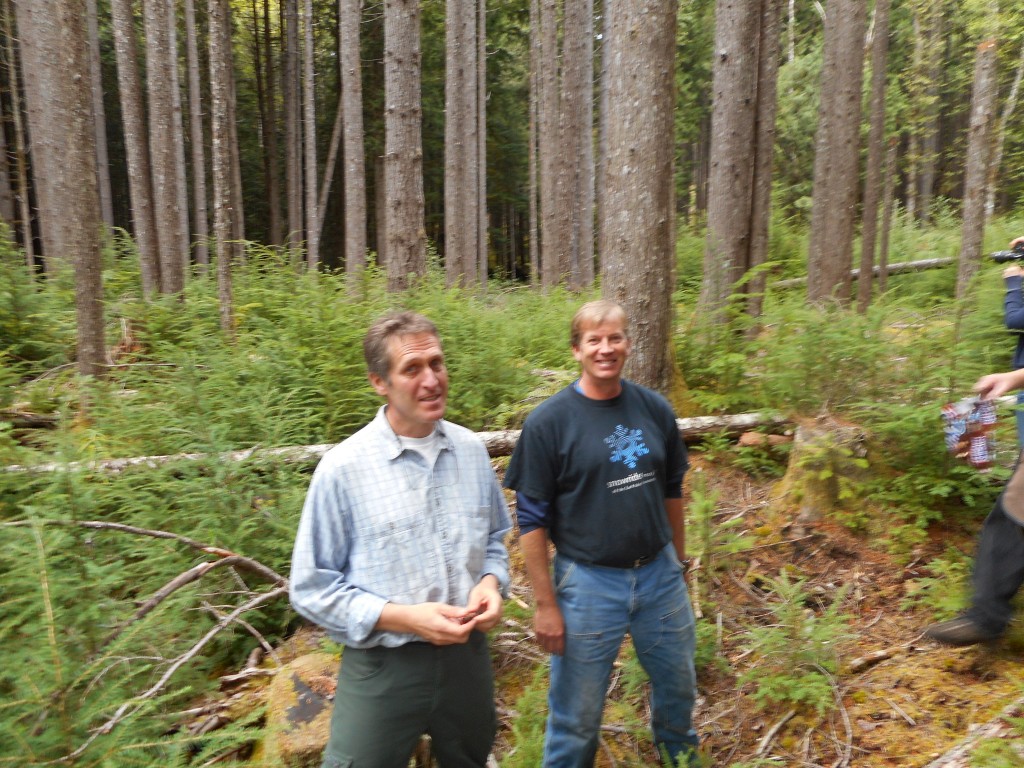
I signed up for this weeks ago and have been looking forward to it. I was not disappointed.
The Cedar River Watershed Education Center – officially in North Bend – is a marvelous complex devoted to educating anyone who stops by in what the Cedar River Watershed is (it the water source for 1.4 million Puget Sound residents), its history, its ecology, how the forest is managed, the flora and fauna and – I will stop right there. You get the idea.
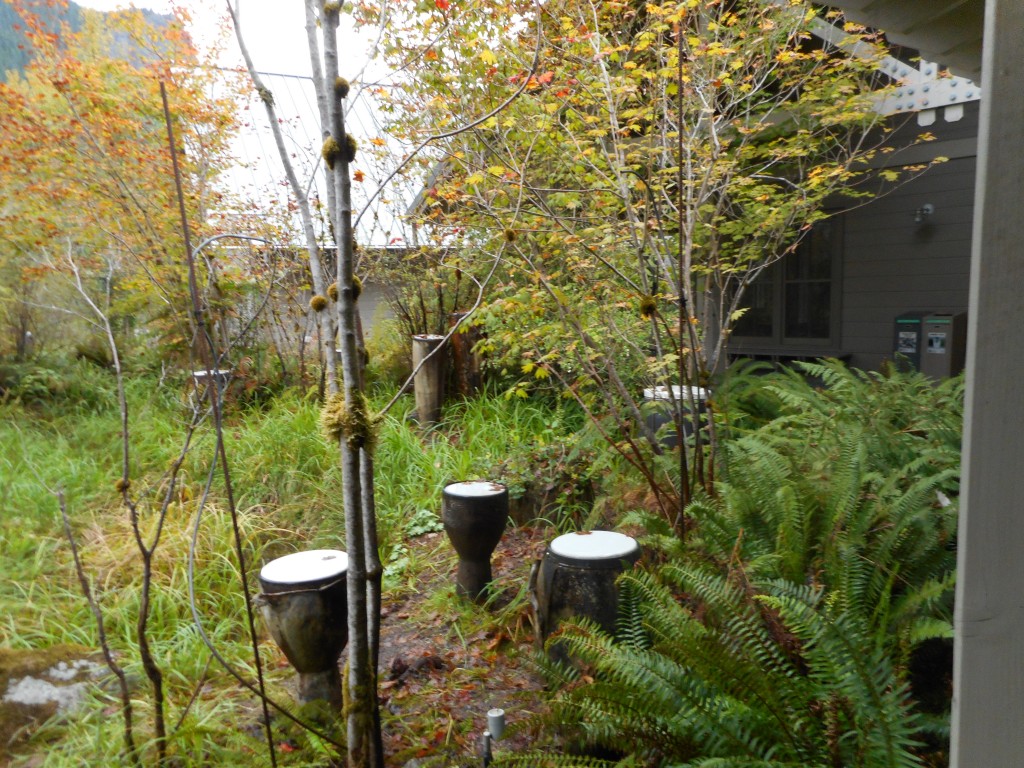
Just outside the room where we all met at 9am is a court with water drums. The drums are played by dripping water and the sound is interesting and soothing.
There were, I believe, 14 of us tourists, Rolf and Bill, our teachers/guides, and another Cedar River Watershed Education Center employee who took photos and drove one of the two vans in which we traveled into the very back country.
Much of the territory surrounding our hikes is strictly off-limits, as it is part of the watershed. Today, we got to go backstage and it sure is terrific.
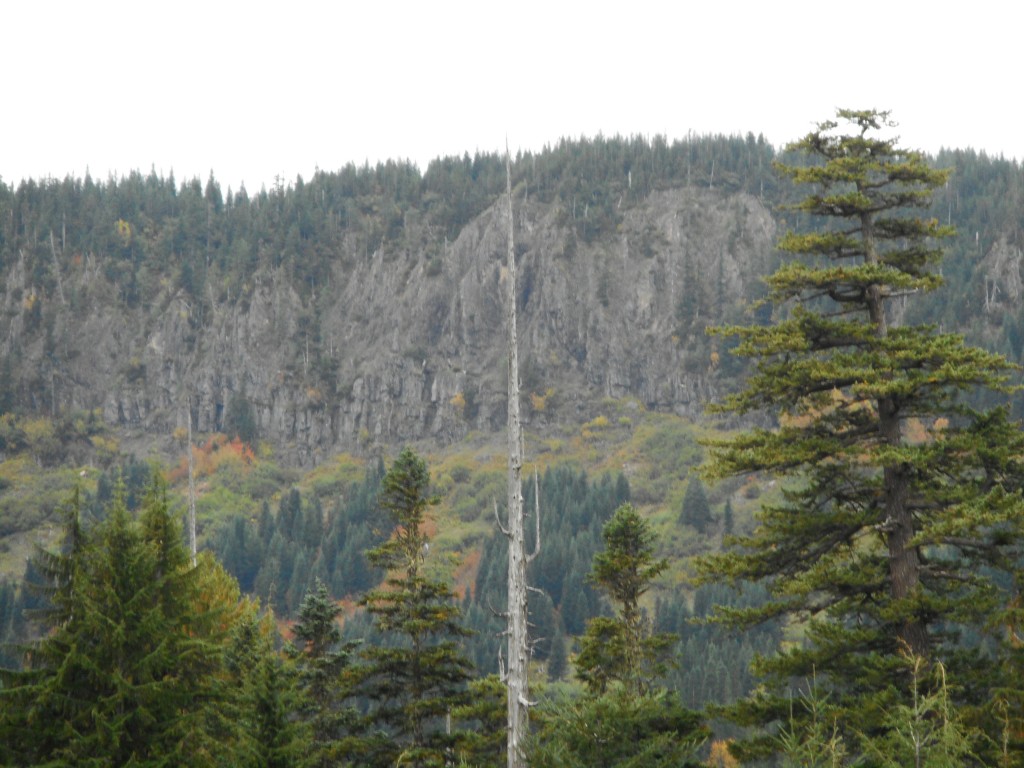
We stopped at four different locations, each one carefully chosen to illustrate an important ecology and restoration-related point. The ‘restoration’ has to do with the fact that most of this region was clear-cut in the past and the forest is now growing back.
But how to help the forest be as robust and healthy as possible? That is not an easy question to answer, but Rolf and Bill are integral parts of a large team of scientists, students, and assorted super-persons (like the contractors who come in with huge chainsaws to thin selected areas) trying to find the best answers.
Along the way we stopped at a stand of trees that are among the oldest in the Pacific Northwest, in the range of 700 years old. There was a massive fire 300 years ago that destroyed most of the forest from the Cascades to the Olympics, which is why most of the old growth forest around here is 300 years old.
But this little stand survived that fire and survived the logging companies and we were hiking through it today.
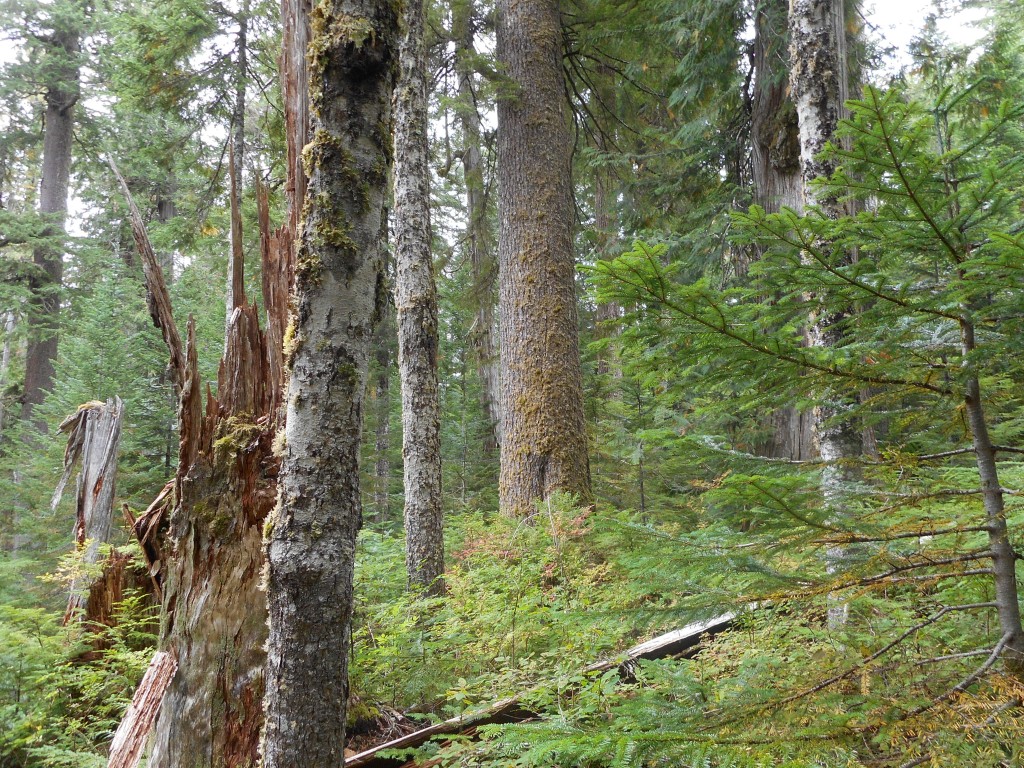
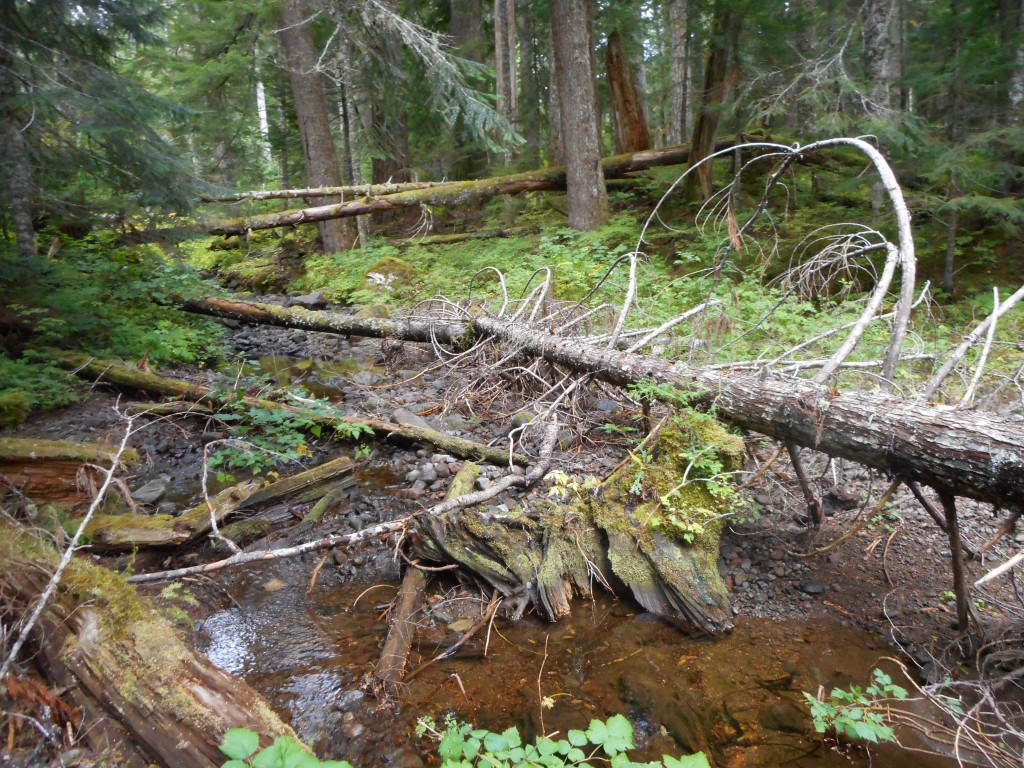
Rolf and Bill are gold mines of fascinating information about trees and ecology and – and pretty much everything you might want to know about forests and their flora and fauna and management. They pointed out a number of Mountain Beaver holes (but we did not see any of the little critters).
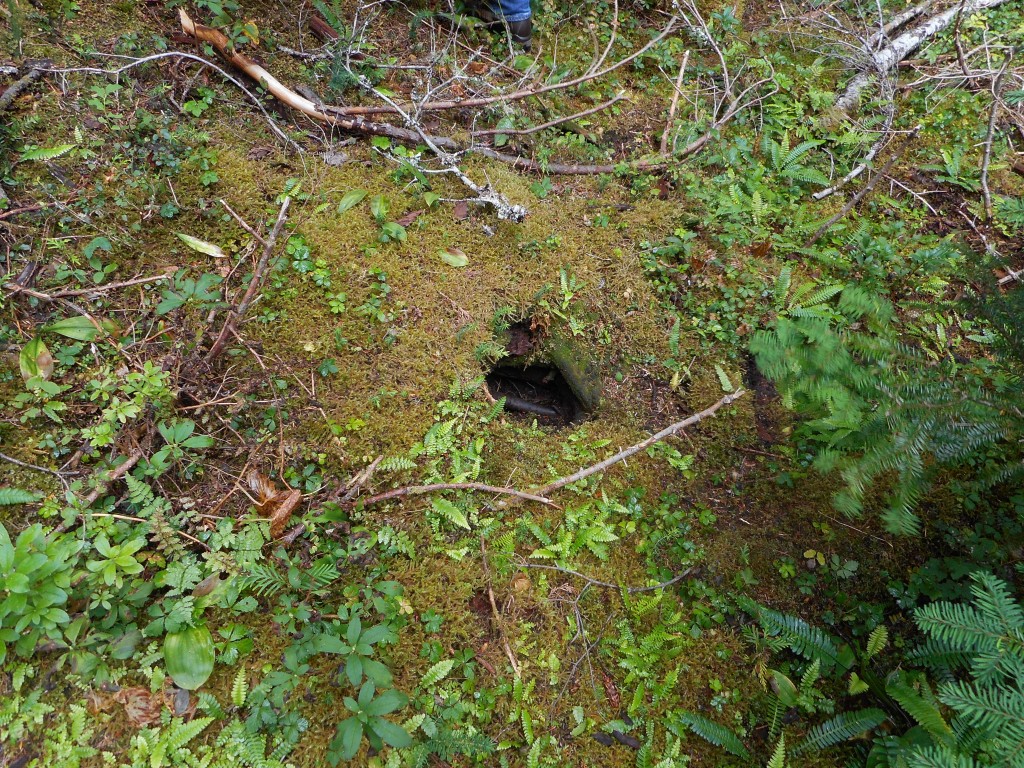
On the way back we stopped and inspected an area where they had cut down enough trees to allow the survivors to flourish, and to encourage a variety of trees to survive. Some trees are better than others at pushing through relatively dark conditions (left alone, the new growth is really thick, allowing around 5% of the light from the top of the canopy through) and thinning helps keep the forest healthy and happy.
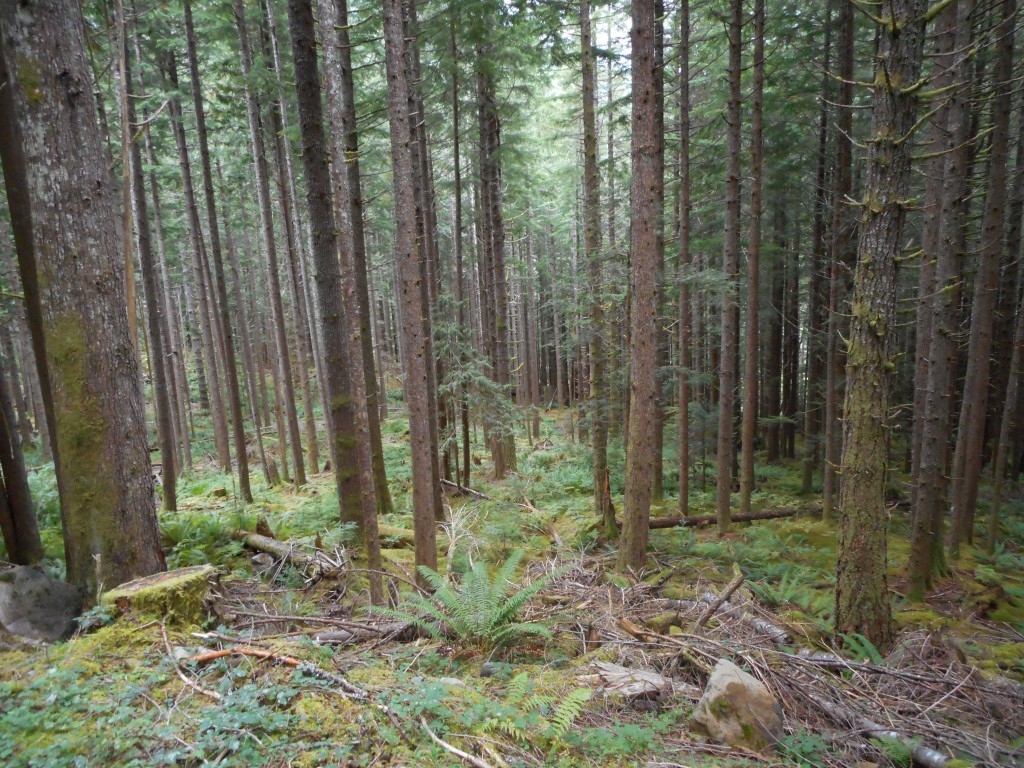
You can see from the photo above that they leave the felled trees on the forest floor, there to go back to the earth and provide shelter and food and minerals to various bugs and other critters.
One rather interesting relationship is between squirrels and truffles. Truffles! They are essentially mushrooms that grow underground. Because they are underground their spores cannot spread as other plant spores spread, on the wind.
So the truffles rely upon squirrels to find them, dig them up, eat them, and deposit them somewhere else. How do they find them? The truffles have a distinctive citrusy odor (some people use pigs to sniff them out) – perfect!
And it was a perfect day. Many thanks and kudos to Rolf and Bill and the entire Cedar River Watershed Educational Center. I totally urge anyone in this area to check them out, take one of their tours, or just visit their beautiful facilities right next to Rattlesnake Lake.
http://www.seattle.gov/util/EnvironmentConservation/OurWatersheds/CedarRiverWatershed/CedarRiverEducationCenter/index.htm